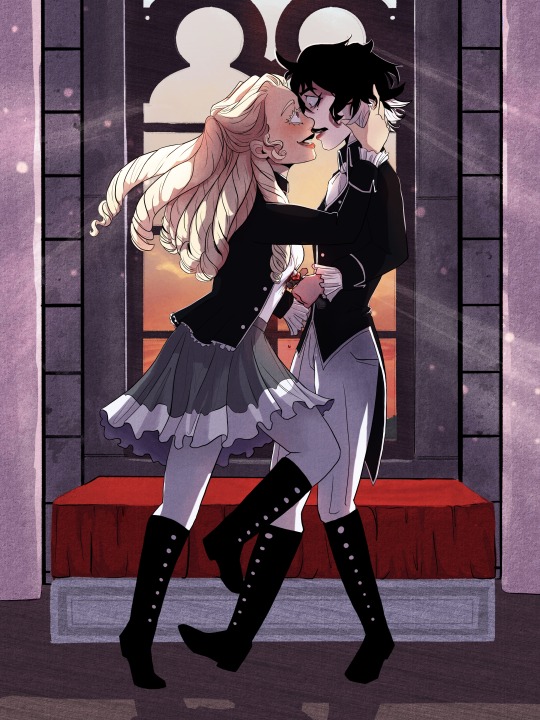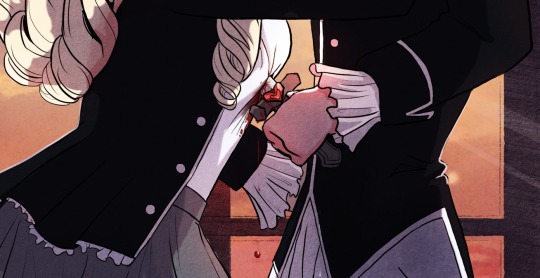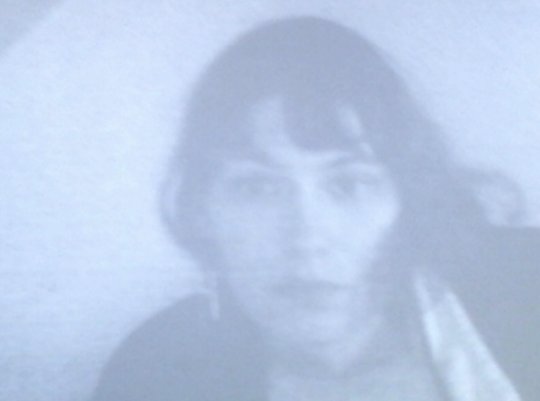#making this piece made me feel like i was forging a rembrandt or something
Text

Kill me if you choose, pet. You're the only one who can.

If I must live with your hatred, then I will not live at all.
#don't you hate it when you're holding the manipulative and untrustworthy love of your life at knifepoint#but then she throws herself on your blade in a symbolic display of the obsessive and self destructive nature of her attachment to you#holy shit this took me forever#making this piece made me feel like i was forging a rembrandt or something#one of my favorite style studies I've ever done#nevermore#nevermore webtoon#mongoose's art#anyway please go read about these insane lesbians
266 notes
·
View notes
Text
Ulla, Tumbling Towards a Wall (2020)

Ulla's Tumbling Towards a Wall functions on first few listens like a series of sketches towards a comprehensive portrait of modern, post-Brian Eno ambient music. The portrait, moreover, is entirely flattering--not a Goya or a Rembrandt with an array of thorny, disorienting details that complicate the subject's standing in the surrounding environment, but more like a Gainsborough or Holbein, where the subject is dressed up nice and made to look regal or attractive or however it is they want to look. I don't want to extend the metaphor too far: "ambient music" did not patronize Ulla Straus to memorialize it, nor does Tumbling register as a project to fulfill a commitment to some appeal other than Ulla's own estimable sonic instincts. But there's something uncanny about how each song on this album works out a particular idea, and how each idea seems to embody a particular strand of the history of ambient music, and how each idea is made to seem like a good idea, and how the whole package eventually resonates emotionally.
2019's pleasing Big Room functioned in a manner similar to this album, jumping from one textural idea to the next, but Ulla's production chops have only grown since then, and Tumbling Towards a Wall's varied sonic environments are even more ear-catching individually and distinct from one another. Opener "New Poem" sets the stage with overlapping layers of white noise, analog clicks and ticks, and a persistent two-note keyboard motif that sounds like a radar forging its path through the ocean and finding only more water. Once "New Poem" fades out brandishing essentially the same sonic accessories with which it faded in (every song on this album begins with a fade-in and ends with a fade-out), we're in a new world, that of "Leaves and Wish," where thrumming, panning lo-fi maybe-guitars give off the impression that they're passing a soft bass-drum-and-rimshot rhythm back and forth between your left and right ear. Then, onto the twittering rainforest of "Something I Can't Show," which again feels like an entirely new environment, rooted in an entirely new set of formal impulses. I once described Teebs' Ardour by comparing it to Super Mario Galaxy: the beginning of each song transports us into an unfamiliar climate without warning; the effect eventually becomes kaleidoscopic due to the wild timbral coloration of the songs and the quick pace at which we move. Tumbling Towards a Wall is more subdued and the songs are longer, but the same feeling persists throughout that we're experiencing a series of detailed miniatures or tableaux.
From the first track onwards, a number of comparisons will hit the associative docket for many ambient listeners: the sentimental fuzz of Talk Amongst the Trees-era Eluvium, maybe; certainly the stringent minimalism of early Basic Channel; the soft analog touch of Jan Jelinek; the gorgeous distribution of glitch artifacts across tender piano chords as it occurs in the music of Ryuichi Sakamoto. There's no denying that some of the pleasure of Tumbling Towards a Wall is located in the essential function of genre. Deciding to listen to this record makes me feel as I imagine a 1940s movie audience felt before heading to a screening of My Darling Clementine: "Hey, let's go see a Western!" You put on Tumbling Towards a Wall when you want to hear ambient music, plain and simple.
Yet craft, at its most compelling, can supersede any concerns we have about so-called "originality" or "innovation," and Tumbling is no mere exercise in ambient historiography. This is a deeply felt album, albeit a somewhat reserved one; perfect for studying and practicing mindfulness, these tracks also work on you subterraneously due to the warm compositions and their embeddedness in a lightly populated sonic weave that allows them to expand and contract, an inspired and eventually moving blend of stillness and motion. In tamping down her consonances to the force of a whisper, Ulla captures something of the "ambience" of our internal lives, the subtle changes in emotional cadence that structure our experience of the world. The piece de resistance in this regard is the album's closer, the twirling ballad "I Think My Tears Have Become Good," the light and gorgeous piano line of which is situated somewhere between a pure loop and a continuously shifting melody. Returning periodically to its yearning, ethereal motif (a high G followed by the G-sharp directly above it), it's hard to tell how "I Think My Tears Have Become Good" was constructed; I can't personally find a discernible pattern in its melodic narrative. The song therefore recapitulates and makes clear the story told by the entirety of Tumbling Towards a Wall--a story of the power of ambient music more generally, yes, but also the story of the consummate artist tapping into that power, drawing feeling from spareness, sketching out not only the precepts of a particular genre but also the delicate flow of the human soul.
0 notes